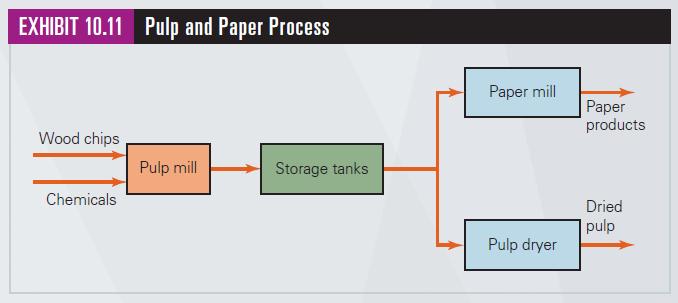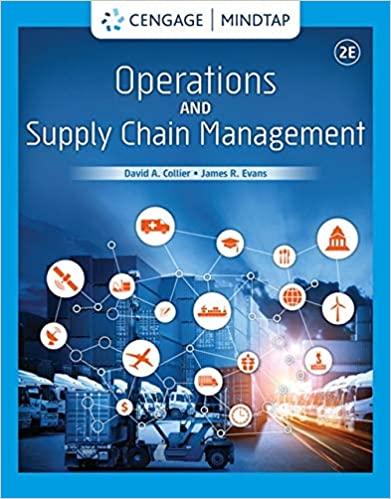At the beginning of day one, 75 tons are remaining in the storage tank. At the current
Question:
At the beginning of day one, 75 tons are remaining in the storage tank. At the current capacities (base case), what is the average amount of pulp lost at the dryer and paper mill over a month (30-days)?
Appleton Corporation is one of the largest forest products companies in the world, converting trees into three basic product groups: (1) building materials, such as lumber and plywood; (2) white paper products, including printing and writing grades of white paper; (3) brown paper products, such as liner-board and corrugated containers. Given the highly competitive markets within the forest-products industry, survival dictates that Appleton maintains its position as a low-cost producer of quality products. That requires an ambitious capital program to improve the timber base and to build modern, cost-effective timber conversion facilities.
The pulp mill has a capacity of 800 tons per day (TPD), the paper mill has a capacity of 600 TPD of pulp use, and the dryer can handle 200 TPD. However, all of the equipment in the mill is subject to downtime for maintenance and reliability breakdowns. The pulp mill is assumed to have an average of 10 percent downtime. The actual downtime varies between 0 and 20 percent each day. For example, one day the pulp mill might be down 2 percent of the time, the next day 20 percent, and so on. In the paper mill, downtime averages 5 percent of the total working hours and may vary between 0 and 10 percent each day. Dryer downtime averages 15 percent and may vary from 0 to 30 percent each day. (Such situations can be modeled as uniform probability distributions; see Supplements A, Probability and Statistics, and G, Simulation.) Because of downtime, any pulp that has been allocated to the paper mill or dryer but cannot be produced is discarded.
Storage tank capacity is limited to 800 TPD. If the storage tanks become full, pulp mill production stops for the day. On any day, once all pulp has been produced or the storage tanks become full, the pulp is sent to the paper mill or dryer for processing. Production at the pulp mill resumes the next day.
An integrated pulp and paper mill is a facility in which wood chips and chemicals are processed to produce paper products or dried pulp. First, wood chips are cooked and bleached in the pulp mill; the resulting pulp is piped directly into storage tanks, as shown in Exhibit 10.11. From the storage tanks the pulp is sent to either the paper mill or a dryer. Any excess pulp not allocated to the paper mill or dryer is stored in the storage tanks until the next day. In the paper mill, the pulp is converted to finished paper products. Alternatively, the pulp is sent to a dryer, and the dried pulp is then sold to paper mills that do not have the capability of producing their own pulp. The profit margin is higher for dried pulp, so it is important to fully utilize the dryer capacity. The total system is a large facility costing several hundred million dollars.

Step by Step Answer:

Operations And Supply Chain Management
ISBN: 9780357131695
2nd Edition
Authors: David A. Collier, James R. Evans





